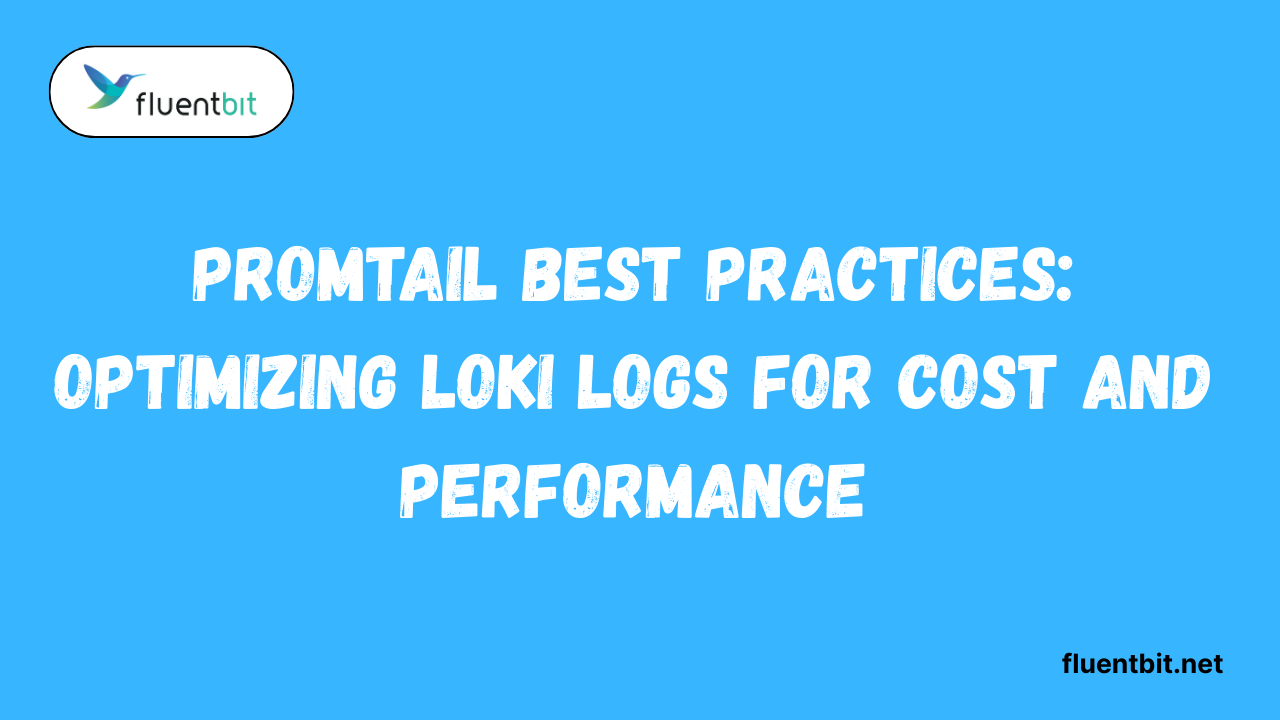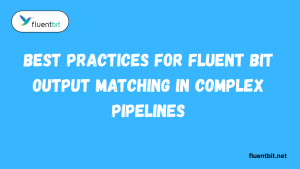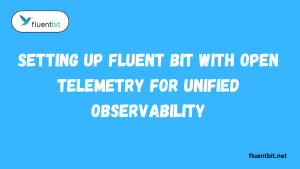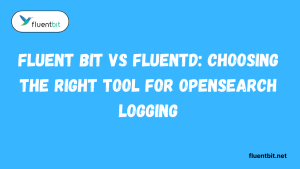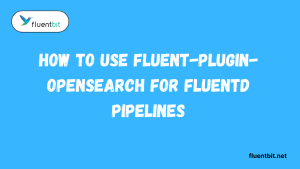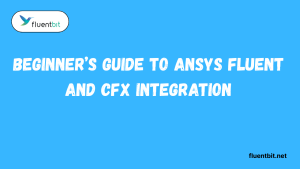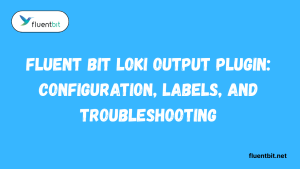Table of Contents
ToggleIntroduction
Promtail Best Practices are the unsung hero of efficient log collection for Grafana Loki. It ensures that every log from your Kubernetes pods, systemd journals or custom sources gets labeled and shipped correctly.
Unlike some other log collectors Promtail vs Fluentbit often comes up in conversations because Promtail is explicitly designed for Loki making it highly streamlined for that ecosystem. Getting Promtail right can save you both time and money.
Why Promtail Matters for Efficient Loki Logging
When setting up a logging pipeline, the comparison between promtail and fluentbit often arises as a key consideration. Promtail is explicitly designed for highly available Loki, making it extremely efficient at collecting logs with minimal overhead.
Cost and Performance Considerations
When considering cost and performance Fluentbit vs. Promtail highlights how Promtail can conserve resources. By configuring filter batching and using labels properly you can avoid sending unnecessary logs, reduce storage costs and improve query efficiency.
What is Promtail and how it works
Promtail vs Fluentbit: Promtail is a lightweight log collector built to feed logs into Grafana Loki. It gathers logs, labels them smartly, and ships them efficiently. It reads logs from Kubernetes pods, systemd journals, or files.
Core Functionality of Promtail
Fluentbit vs Promtail: Promtail’s core work is simple: collect, label, and ship logs. It collects logs, enriches them with labels, and sends them to Loki. This workflow keeps dashboards up to date in real-time. Promtail handles multiple sources smoothly, making it ideal for high-volume environments and Loki-focused setups.
Differences Between Promtail and Fluent Bit (promtail vs fluentbit)
Promtail vs Fluentbit: Fluent Bit supports multiple outputs, whereas Promtail is designed explicitly for Loki. This focus makes Promtail faster and more efficient for Loki pipelines. It also labels logs automatically with Kubernetes metadata. Fluent Bit requires extra configuration.
When comparing Fluent Bit vs Promtail, Promtail is simpler for Loki-focused setups.
Log Collection, Labeling, and Shipping
Fluentbit vs Promtail: Promtail collects logs via DaemonSets or directly from files and systemd journals. Labels like pod name, namespace, or app type are added for easy filtering. After labeling, logs are shipped to Loki efficiently.
This keeps network and CPU usage low even under high log throughput making Promtail a top choice for Loki-centric setups.
Configuring Promtail for Kubernetes
Promtail vs Fluentbit: Setting up Promtail on Kubernetes is straightforward. You deploy it via manifests or Helm charts to efficiently collect pod logs. You can customize config maps to define log paths, scrape intervals, and labels. This ensures logs are structured and ready for Loki.
Using DaemonSets for Pod-Level Log Collection
- Deploy Fluent Bit or Promtail as a DaemonSet to run on every Kubernetes node.
- Ensure logs from all pods on each node are collected automatically.
- Simplifies log aggregation without needing per-pod agents.
- Supports dynamic scaling as new nodes or pods are added to the cluster.
- Combine with labels and namespaces for organized, multi-tenant logging.
Managing Log Paths and Systemd Journals
Promtail vs Fluentbit: Promtail can read logs from container files or systemd journals. You just specify paths in the config map. This makes it easy to centralize logs from multiple sources. By labeling logs based on their origin, searching in Loki becomes fast and efficient.
Handling High Log Throughput
Fluent Bit vs. Promtail: Promtail efficiently handles high-volume logs by batching and buffering them before sending them to Loki. Adjusting batch size and scrape intervals prevents network overload. Combined with labeling this ensures your logs remain consistent and accessible even during spikes.
Optimizing Log Labels and Metadata: Promtail Best Practices
When it comes to Promtail labels are your secret sauce for making logs meaningful and searchable in Loki. Properly labeling logs helps you find exactly what you need without having to sift through mountains of data. Focus on adding labels that truly matter like app namespace or pod instead of generic tags that add clutter.
Best Practices for Labeling Logs
Labeling logs clearly makes them easy to find and analyze. Focus on essential labels such as namespace apps and environments. Avoid using too many extra labels as they increase storage costs and slow queries. Consistent labeling keeps your logs organized and efficient. Well-labeled logs also make dashboards and alerts more reliable.
Reducing Unnecessary Metadata for Cost Savings
Extra metadata adds to storage costs. Keep only what’s needed for monitoring and debugging. Removing verbose or repetitive fields keeps logs lean and reduces storage costs. Minimal metadata also speeds up queries and helps Promtail send logs efficiently in Fluentbit setups compared to Promtail setups.
Efficient Querying in Loki
Smart labeling ensures fast queries in Loki. Use consistent labels and time-range filters for precise results. Avoid broad queries that overload dashboards. Optimized labels let Loki fetch logs quickly making analysis easier. This approach also highlights
Log Filtering and Rate Limiting
Keeping your logs tidy is key to both performance and cost efficiency. Filtering out irrelevant logs before shipping ensures that only the data you actually need reaches Loki. This reduces storage costs and keeps queries fast.
Promtail enables you to define rules for log paths labels and patterns allowing you to easily discard noisy entries without affecting your core workflow.
Filtering Out Irrelevant Logs Before Shipping
Smart filtering also helps when troubleshooting. Instead of sifting through hundreds of irrelevant messages, you get straight to the logs that matter. Combining this approach with proper label management improves visibility and makes your log dashboards more actionable.
Using Promtail vs. Fluentbit, you can decide which tool best fits your filtering needs, depending on your environment.
Setting Rate Limits to Prevent Spikes
Rate limiting works beautifully in Kubernetes environments, where workloads can fluctuate dramatically. You can tune limits per namespace or per application to match your traffic patterns. When comparing Fluentbit vs.
Promtail you’ll notice that Promtail’s rate limiting integrates seamlessly with Loki providing a more tailored and cost-effective solution for high-traffic scenarios.
Combining Filters with Promtail vs FluentBit Strategies
Combining filtering rules with careful log routing is where real efficiency happens. Promtail enables you to filter logs and apply transformations before sending them, thereby minimizing unnecessary data transfer. On the other hand, Fluent Bit vs promtail setups might offer more flexibility for multi-output scenarios making it easier to handle diverse logging requirements.
Compression and Batch Settings
Managing batch size properly can make a massive difference in log performance. Sending logs in efficient batches reduces network overhead and keeps your Loki pipeline smooth. Adjusting Fluent Bit vs promotional batch settings ensures your system handles high volumes without slowing down. Enabling log compression is another smart move.
Using Batch Size Effectively for Performance
- Adjust batch size to control how many log records are sent at once.
- Larger batches improve throughput but may increase memory usage.
- Smaller batches reduce latency but could slightly impact efficiency.
- Monitor system performance and tweak batch size for optimal results.
- Combine with buffering and throttling to prevent data loss during spikes.
Enabling Log Compression to Save Storage
Compression is a lifesaver when storing huge volumes of logs. By enabling it, you reduce storage costs and keep Loki’s backend nimble. Promtail vs. Fluentbit shows that each tool handles compression differently, so choose the approach that matches your workflow. Smaller compressed payloads also travel faster across the network.
Impact on Loki Query Speed
Optimized logs aren’t just about storage they affect how fast you can search and analyze data. Larger unoptimized logs slow down queries, while efficient batching and compression speed things up. Fluent Bit vs promtail choices also play a role here, as different tools handle indexing differently.
Maintaining a clean structured log flow ensures Loki responds quickly.
Monitoring Promtail Performance
Keeping an eye on Promtail performance is crucial for smooth log collection. Monitoring key metrics, such as ingestion rate dropped logs and processing latency, helps identify potential issues early. Combining promtail vs fluentbit strategies can highlight differences in efficiency and help you tune your pipeline effectively.
Key Metrics to Watch in Promtail
Some metrics are essential for healthy log management. Look at log ingestion per second, memory usage, and CPU load. These metrics reveal if Promtail is keeping up with your workload or if adjustments are needed in batch size or buffer settings. Integrating Fluent Bit vs.
Promtail insights allows for more intelligent decisions when optimizing throughput.
Avoiding Performance Bottlenecks
Performance bottlenecks can significantly slow down your logging pipeline. Focus on balancing batch sizes tuning Fluent Bit vs Promtail configurations, and monitoring network throughput. Minor tweaks often prevent larger delays. Proactive adjustments like managing buffer size and controlling log spikes help maintain smooth performance.
Alerts and Dashboards for Proactive Monitoring
Setting up alerts and dashboards in Grafana helps you catch issues before they escalate. Use metrics from Promtail to create thresholds for high CPU usage, memory usage, or dropped logs. Pairing this with comparisons between promtail and fluentbit helps you refine alert rules effectively. Visual dashboards make it easier to spot trends and anticipate problems.
Cost-Saving Strategies for Loki Logs
Optimizing log storage can significantly reduce cloud costs. Implement retention policies, archive older logs and select efficient log formats to minimize storage requirements. Combining Fluentbit vs promtail strategies allows you to minimize redundant or excessive logging.
Thoughtful planning for log volume and lifecycle ensures you retain critical data while avoiding unnecessary expenses. Efficient log management strikes a balance between performance reliability and cost.
Retention Policies and Log Lifecycle Management
Retention policies are your friend for long-term cost control. Determine the duration for which logs are required in Loki and when to delete or archive them. Promtail can efficiently tag and route logs, supporting these policies.
Structured lifecycle management ensures compliance and prevents storage bloat. Using Promtail vs. Fluentbit insights helps streamline which logs need to stay live and which can be compressed or deleted.
Choosing the Right Log Format and Size
Smaller, structured log formats are easier to store and query. JSON or compact formats reduce storage overhead and speed up searches. Comparing Fluent Bit vs. Promtail helps determine which tool handles your preferred format best. Efficient log formatting improves performance, reduces Loki query time, and cuts storage costs.
Integrating Fluentbit vs Promtail Approaches for Optimization
Using a hybrid approach can bring the best of both worlds. Fluent Bit vs. promtail integration enables you to leverage Fluent Bit’s versatility and Promtail’s Loki-specific optimizations. This ensures logs are collected efficiently and cost-effectively. Combining features like buffering, batching and filtering across tools maximizes performance.
Conclusion
Optimizing Promtail for Loki involves striking a balance between performance cost and reliability. By applying best practices such as filtering unnecessary logs managing batch sizes and compressing data you can keep your log pipeline smooth and efficient.
Comparing Promtail vs Fluentbit or Fluent Bit vs Promtail approaches helps you choose the right strategy for your environment ensuring both speed and cost-effectiveness.
FAQs
What is the difference between Promtail and Fluent Bit?
Promtail is explicitly designed for Loki, focusing on scraping logs and attaching labels to them. Fluent Bit is a versatile log processor that can send logs to multiple destinations. Comparing Promtail vs Fluentbit helps you understand which one suits your needs better.
How do I set up Promtail efficiently in Kubernetes?
Deploy Promtail as a DaemonSet, configure labels for Kubernetes pods, and optimize buffer and batch settings. Leveraging Fluent Bit vs promtail strategies ensures smooth log collection and minimal overhead.
Can Promtail handle high-volume log streams?
Yes! By adjusting batch sizes, implementing rate limits, and utilizing efficient log formats, Promtail can process large volumes without dropping logs. Combining Fluent Bit vs promtail insights can further optimize throughput.
How do labels affect Loki query cost?
Labels help organize logs, but adding too many can increase storage and query costs. Efficient labeling strikes a balance between query flexibility and cost savings, especially when using Promtail versus Fluentbit strategies.
What’s the best way to compress logs for storage savings?
Enable compression in Promtail before sending logs to Loki. Using compact JSON or other efficient formats reduces storage needs and improves query speed, a key tip from Fluent Bit vs ProMail comparisons.
Can I filter logs dynamically with Promtail?
Absolutely! Filters allow you to exclude unnecessary logs or route them based on labels. Combining dynamic filtering with Promtail vs. Fluentbit strategies helps maintain performance while reducing costs.
Latest post:
- Best Practices for Fluent Bit Output Matching in Complex Pipelines
- Setting Up Fluent Bit with Open Telemetry for Unified Observability
- Fluent Bit vs Fluentd: Choosing the Right Tool for OpenSearch Logging
- How to Use fluent-plugin-opensearch for Fluentd Pipelines
- Is Ansys Fluent Better for Complex Fluid Flow Simulations?

